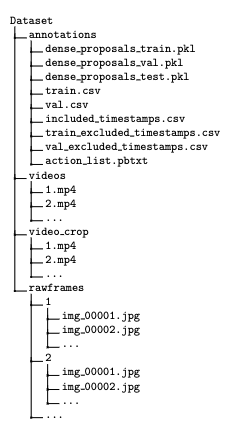在
Python中,可以有一个列表(类似于swift中的数组):
>>> li=[0,1,2,3,4,5]
并在列表的任何/所有列表上执行切片分配:
>>> li[2:]=[99] # note then end index is not needed if you mean 'to the end' >>> li [0,99]
Swift有一个类似的切片赋值(这是在swift交互式shell中):
1> var arr=[0,5]
arr: [Int] = 6 values {
[0] = 0
[1] = 1
[2] = 2
[3] = 3
[4] = 4
[5] = 5
}
2> arr[2...arr.endindex-1]=[99]
3> arr
$R0: [Int] = 3 values {
[0] = 0
[1] = 1
[2] = 99
}
到现在为止还挺好.但是,有几个问题.
首先,swift不适用于空列表或索引位于endindex之后.如果切片索引在结束索引之后,则Python附加:
>>> li=[] # empty >>> li[2:]=[6,7,8] >>> li [6,8] >>> li=[0,2] >>> li[999:]=[999] >>> li [0,999]
4> var arr=[Int]() arr: [Int] = 0 values 5> arr[2...arr.endindex-1]=[99] Fatal error: Can't form Range with end < start
这很容易测试和编码.
第二个问题是杀手:它的速度非常慢.考虑这个Python代码来执行浮点列表的精确求和:
def msum(iterable): "Full precision summation using multiple floats for intermediate values" # Rounded x+y stored in hi with the round-off stored in lo. Together # hi+lo are exactly equal to x+y. The inner loop applies hi/lo summation # to each partial so that the list of partial sums remains exact. # Depends on IEEE-754 arithmetic guarantees. See proof of correctness at: # www-2.cs.cmu.edu/afs/cs/project/quake/public/papers/robust-arithmetic.ps partials = [] # sorted,non-overlapping partial sums for x in iterable: i = 0 for y in partials: if abs(x) < abs(y): x,y = y,x hi = x + y lo = y - (hi - x) if lo: partials[i] = lo i += 1 x = hi partials[i:] = [x] return sum(partials,0.0)
它的工作原理是保持hi / lo部分求和,使msum([.1] * 10)精确地产生1.0而不是0.9999999999999999. ms的等效msum是Python中math library的一部分.
我试图在swift中复制:
func msum(it:[Double])->Double {
// Full precision summation using multiple floats for intermediate values
var partials=[Double]()
for var x in it {
var i=0
for var y in partials{
if abs(x) < abs(y){
(x,y)=(y,x)
}
let hi=x+y
let lo=y-(hi-x)
if abs(lo)>0.0 {
partials[i]=lo
i+=1
}
x=hi
}
// slow part trying to replicate Python's slice assignment partials[i:]=[x]
if partials.endindex>i {
partials[i...partials.endindex-1]=[x]
}
else {
partials.append(x)
}
}
return partials.reduce(0.0,combine: +)
}
测试功能和速度:
import Foundation
var arr=[Double]()
for _ in 1...1000000 {
arr+=[10,1e100,10,-1e100]
}
print(arr.reduce(0,combine: +)) // will be 0.0
var startTime: CFAbsoluteTime!
startTime = CFAbsoluteTimeGetCurrent()
print(msum(arr),arr.count*5) // should be arr.count * 5
print(CFAbsoluteTimeGetCurrent() - startTime)
在我的机器上,需要7秒才能完成. Python native msum需要2.2秒(大约快4倍),库fsum函数需要0.09秒(几乎快90倍)
我试图用arr.removeRange(i ..< arr.endindex)替换partials [i ... partials.endindex-1] = [x]然后追加.快一点但不多. 题:
>这是惯用的swift:partials [i … partials.endindex-1] = [x]
>有更快/更好的方式吗?
解决方法
首先(正如评论中所说),有一个巨大的
Swift中非优化和优化代码之间的区别
(“-Onone”vs“-O”编译器选项,或Debug与Release配置),因此对于性能测试,请确保“Release”配置
被选中. (如果您,“发布”也是默认配置
用仪器描述代码).
Swift中非优化和优化代码之间的区别
(“-Onone”vs“-O”编译器选项,或Debug与Release配置),因此对于性能测试,请确保“Release”配置
被选中. (如果您,“发布”也是默认配置
用仪器描述代码).
使用半开范围有一些优点:
var arr = [0,5] arr[2 ..< arr.endindex] = [99] print(arr) // [0,99]
事实上,这是一个范围在内部存储的方式,它允许你
在数组末尾插入一个切片(但不超过Python中的切片):
var arr = [Int]() arr[0 ..< arr.endindex] = [99] print(arr) // [99]
所以
if partials.endindex > i { partials[i...partials.endindex-1]=[x] } else { partials.append(x) }
相当于
partials[i ..< partials.endindex] = [x] // Or: partials.replaceRange(i ..< partials.endindex,with: [x])
但是,这不是性能提升.看起来
在Swift中替换切片很慢.截断数组和
附加新元素
partials.replaceRange(i ..< partials.endindex,with: []) partials.append(x)
我的测试代码的时间从大约1.25秒减少到0.75秒电脑.






